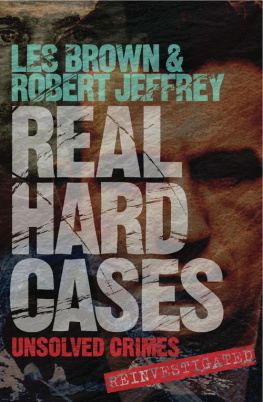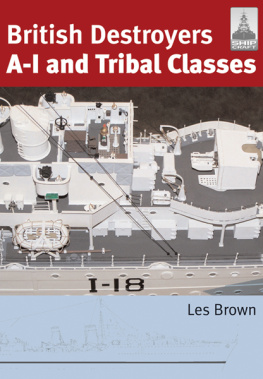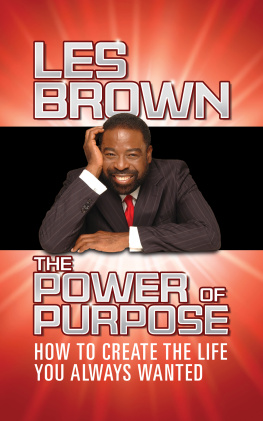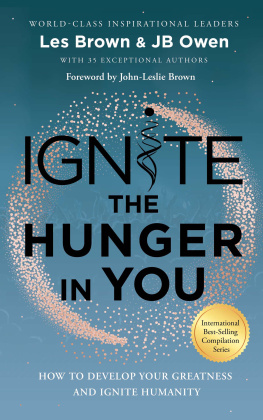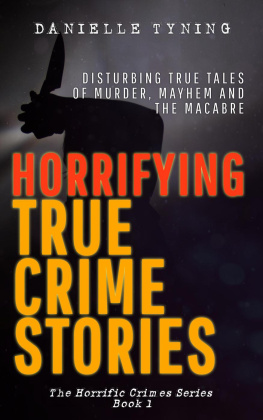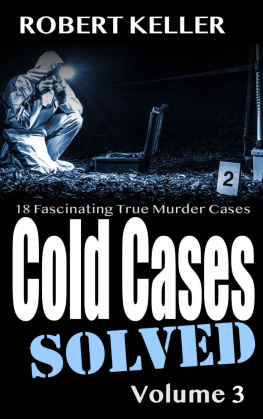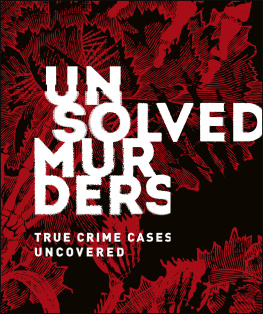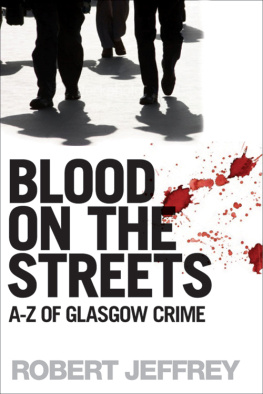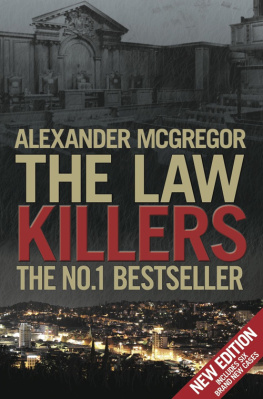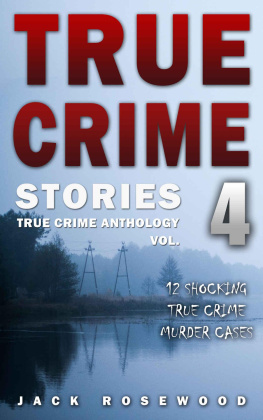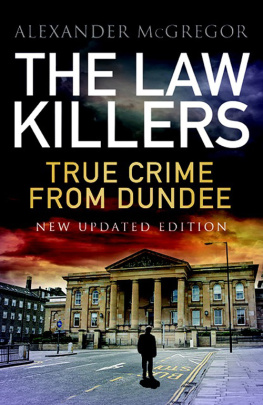Les Brown - Real Hard Cases: True Crime from the Streets
Here you can read online Les Brown - Real Hard Cases: True Crime from the Streets full text of the book (entire story) in english for free. Download pdf and epub, get meaning, cover and reviews about this ebook. year: 2006, publisher: Black and White Publishing, genre: Detective and thriller. Description of the work, (preface) as well as reviews are available. Best literature library LitArk.com created for fans of good reading and offers a wide selection of genres:
Romance novel
Science fiction
Adventure
Detective
Science
History
Home and family
Prose
Art
Politics
Computer
Non-fiction
Religion
Business
Children
Humor
Choose a favorite category and find really read worthwhile books. Enjoy immersion in the world of imagination, feel the emotions of the characters or learn something new for yourself, make an fascinating discovery.
- Book:Real Hard Cases: True Crime from the Streets
- Author:
- Publisher:Black and White Publishing
- Genre:
- Year:2006
- Rating:5 / 5
- Favourites:Add to favourites
- Your mark:
- 100
- 1
- 2
- 3
- 4
- 5
Real Hard Cases: True Crime from the Streets: summary, description and annotation
We offer to read an annotation, description, summary or preface (depends on what the author of the book "Real Hard Cases: True Crime from the Streets" wrote himself). If you haven't found the necessary information about the book — write in the comments, we will try to find it.
Real Hard Cases: True Crime from the Streets — read online for free the complete book (whole text) full work
Below is the text of the book, divided by pages. System saving the place of the last page read, allows you to conveniently read the book "Real Hard Cases: True Crime from the Streets" online for free, without having to search again every time where you left off. Put a bookmark, and you can go to the page where you finished reading at any time.
Font size:
Interval:
Bookmark:
The police are often accused of paying too much attention to detail, the ritual of following procedures taking precedence above all else. But anyone who has pulled on the blue uniform and patrolled dangerous streets will tell you that sometimes procedures can save lives and that there is often a good reason for doing things by the book rather than reacting intuitively. I learned that lesson, often the hard way, on the streets of Glasgow on Friday and Saturday nights back in the sixties. The schemes were tough and so was the city centre. Sauchiehall Street, in particular, was no place to be late on a Saturday evening unless you were tooled up and a fully paid-up member of the Maryhill Fleet or the Roystonhill Shamrock. Strange as it may seem, in these days of pedestrianisation and city-centre gentrification, these two gangs often met by appointment for a dust-up in the area of the old Locarno ballroom. Where there are now new luxury flats, blood was spilled on the streets with alarming regularity in those bad old days.
There were laid-down procedures for the guidance of police officers called in to separate street fighting gangs. I have often heard laymen and -women complain that the use of the siren on a squad car simply warns the bad guys that you are on your way and allows them to escape. To some extent this is true but tackling gangs of thugs, whose main aim in life is to knock hell out of each other with razors, staves, stones or chains, requires a special approach We were always taught that, when called to a scene where there could be literally hundreds of combatants in bloody action, the sound of the siren screaming loudly through the night air helped stop the fight and made the street armies scatter. This saved lives and serious injuries even if, on occasion, it let a villain or two escape.
In those days, the first stop after attending city-centre incidents was usually the casualty department in the Royal Infirmary one of the busiest emergency medical facilities in Britain on Fridays and Saturdays at the time! to check on the injured. It was important to find out if anyone had died as what might have just been a street rumble could turn into a murder inquiry. Gang fights give the police many problems but the most difficult of all was trying to prove, after the event, who had hit whom and who had thrown what at whom in other words, to differentiate between attacker and attacked. It always was and always will be a minefield.
The history of true crime is riddled with illustrations of the problem. Almost eighty years ago, the death of one of the thirties gang leaders highlighted the difficulty. James Dalziel was the ruler of a south-side gang known as the Parlour Boys who were based in a local dance hall. Then, as now, dance halls could be the focus of trouble with rival gangs fighting over the choicest of the local girls who would be decked out in their finery and on the pull. Often the men would have poured out of the local spit-and-sawdust drinking dens blind drunk. Problems stemming from drug use were in the distant future but the illegal chemical route to nirvana had its forerunner in a simple excess of booze. After an affray one night in the Bedford Parlour Dance Hall, in Celtic Street, Dalziel known to his fighting mates as Razzle Dazzle ended up taking a trip to the nearby Victoria Infirmary, mortally injured, on the back of a lorry commandeered into use as a makeshift ambulance. He was dead on arrival and no fewer than sixteen men appeared in court accused of inflicting stab wounds or razor slashes.
At the height of this affray in the dance hall, women screamed and fled for cover as the men battled it out with razors, knives and bottles. After an intense weekend of police activity, sixteen of the dancers were arrested. The police operation involved one of the largest identity parades ever held in the city or anywhere else, I suspect. Almost a hundred young men and women who had been at the dance took part in the line-up. When the accused, all in their twenties and thirties, finally appeared in court, most sported bloodstained bandages on their heads or bodies. The man suspected of delivering the killer blow somehow got the jury on his side and escaped the rope.
The whole business showed just how difficult it is to mete out justice after a gang fight and I had a similar experience myself in the sixties. The location was the old Locarno in Sauchiehall Street. At one time this a real hot spot and it was frequently visited by cops trying to sort out the bad guys from the folk just there for a night out and a twirl round the floor with the prospect of what Glaswegians call a lumber at the end of the night.
Extra patrols were often at the ready to rush to an incident and, if something serious happened, the manager would be briefed to close the doors to make sure the combatants didnt do a runner. I well remember one night we arrived to sort out what was happening behind the doors the manager had locked. There were 200 male dancers in the hall. We propped the victim, who was bleeding profusely from his injuries, on a chair and put down towels to catch the blood before arranging for the dancers to file past, one by one, to let him try to finger the villain. Some hope with such a number of possible assailants! The injured guy was on the verge of passing out from his injuries when he managed to gather enough breath to tell us that the person who had chibbed him had red hair. Suddenly the suspect list had narrowed to eight people. That time, we got a result and the person responsible for this bloody attack got eight years but, if he had not had red hair, would we have caught him?
If gang fights as an indoor sport cause problems, those that take place outside can be an even bigger headache. Nothing much has changed in this since the twenties and thirties. Groups of youths still confront others with all sorts of weapons and sticks and stones as they defend what they call territory or try to move in on another groups area. In Glasgow, the defining line between one gangs patch and anothers can be a main road and innocent motorists are at much risk passing through such places. Stones hurled from one war zone to another across the street can hit cars and potentially lethal objects can be dropped from motorway overpasses. It is all mindless stuff and, if you ask the gangs why they are fighting, the answer is often that the other lot have no right to come into our patch or simply that we hate them. I suspect much of it is just because there are neds who like a bloody battle.
The innocent do get hurt and a tragic case in which A Search for Justice played an important and successful role shows that in dramatic fashion. Gang fights over territory are not exclusively a Glasgow phenomenon much of the wrongdoing that takes place there is mirrored in cities up and down the land. This one took place in Dundee and ended up with a demonstration that, if victims of injustice fight hard enough, they can make their point. Although this case ended up as a success on paper, the tragedy is that an innocent fifteen-year-old boy was dead.
On 30 March 1998, young John Kidd went out after his tea to indulge the usual teenage passion for football. He met a group of friends in Drumgeith Park and had a kick-around. This harmless burning up of energy in an attempt to mimic the heroes of the real-life clubs they supported ended dramatically. The young footballers were attacked by a gang known locally as the Fintry Shams, denizens of a tough local housing scheme. The time was around 9.45 p.m. and, in a way that is not unusual, neighbours near the park sensed trouble was in the air that chilly night. Calls were made to the police but, for one reason or another, no assistance came. In the meantime, John Kidd was hit in chest by a stone thrown by the invaders. This injury was so severe that it killed John.
Font size:
Interval:
Bookmark:
Similar books «Real Hard Cases: True Crime from the Streets»
Look at similar books to Real Hard Cases: True Crime from the Streets. We have selected literature similar in name and meaning in the hope of providing readers with more options to find new, interesting, not yet read works.
Discussion, reviews of the book Real Hard Cases: True Crime from the Streets and just readers' own opinions. Leave your comments, write what you think about the work, its meaning or the main characters. Specify what exactly you liked and what you didn't like, and why you think so.

